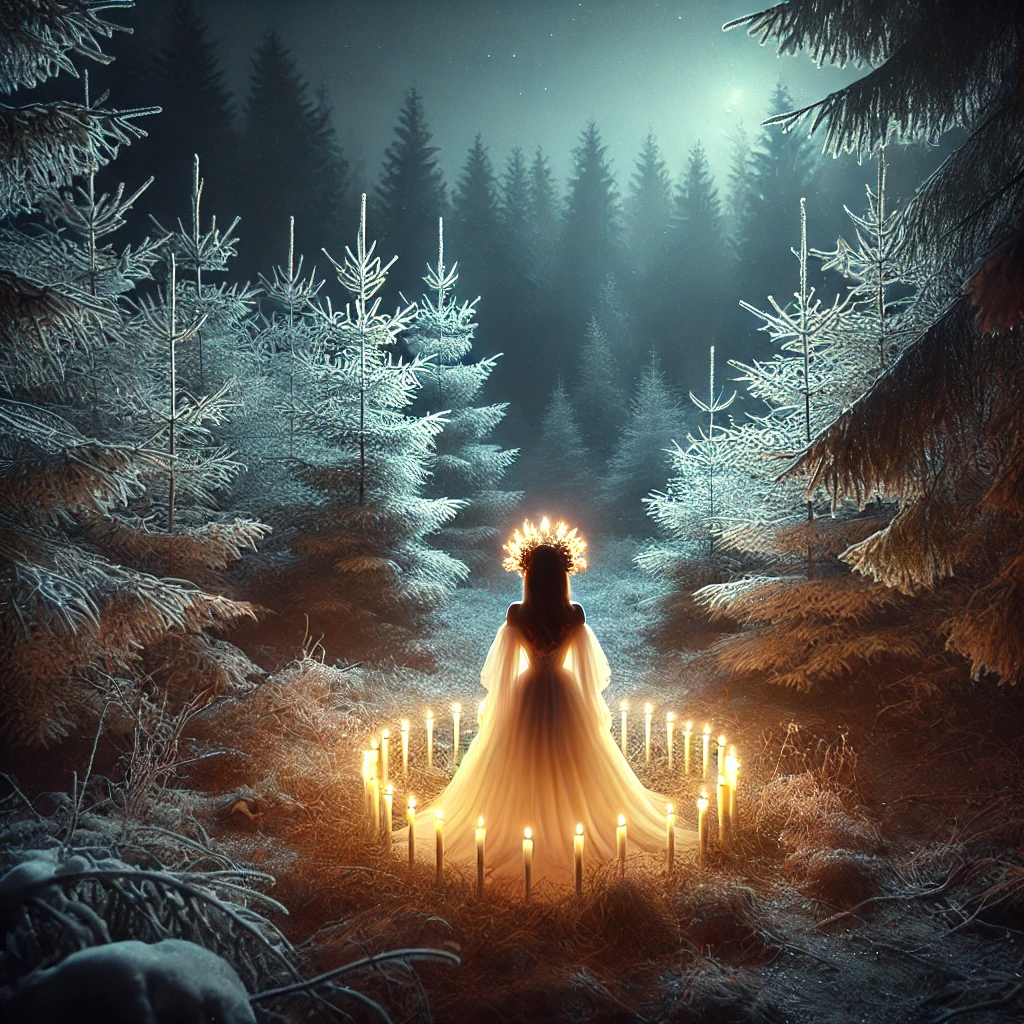St. Lucia’s Day, also known as the Feast of Light, is celebrated on December 13, primarily in Sweden and other Nordic countries. It honors St. Lucia (or St. Lucy), a Christian martyr from Syracuse, Italy, who lived around the 3rd century AD. Her feast day coincides with the winter solstice according to the old Julian calendar, making her a symbol of light in the darkest time of the year.
Traditions and Symbolism:
- Processions:
- The central figure is a young girl dressed in a white gown with a red sash (symbolizing martyrdom).
- She wears a crown of candles on her head, representing bringing light into darkness.
- She is often accompanied by other girls and boys in white, holding candles and singing traditional Lucia songs.
- Songs and Music:
- Traditional songs such as “Sankta Lucia” are sung, filling homes, schools, and churches with a magical atmosphere.
- Festive Foods:
- Special treats like Lussekatter (saffron buns shaped like curled cats) and Pepparkakor (ginger biscuits) are prepared and enjoyed.
- Community Gatherings:
- Schools, churches, and community centers host St. Lucia celebrations, often including concerts and theatrical performances.
- Symbolic Meaning:
- The feast symbolizes hope, light, and renewal, reminding people that longer, brighter days are coming.

